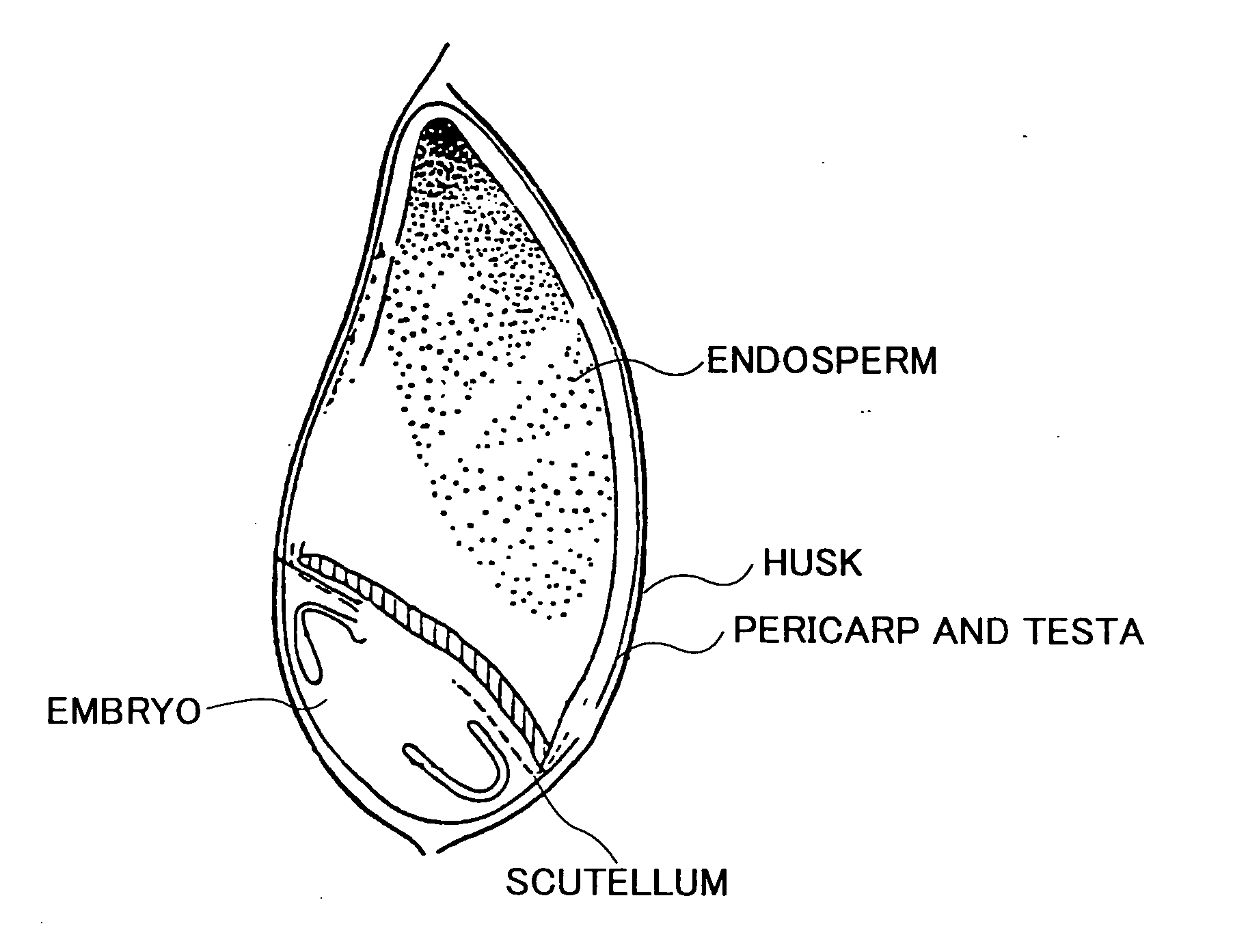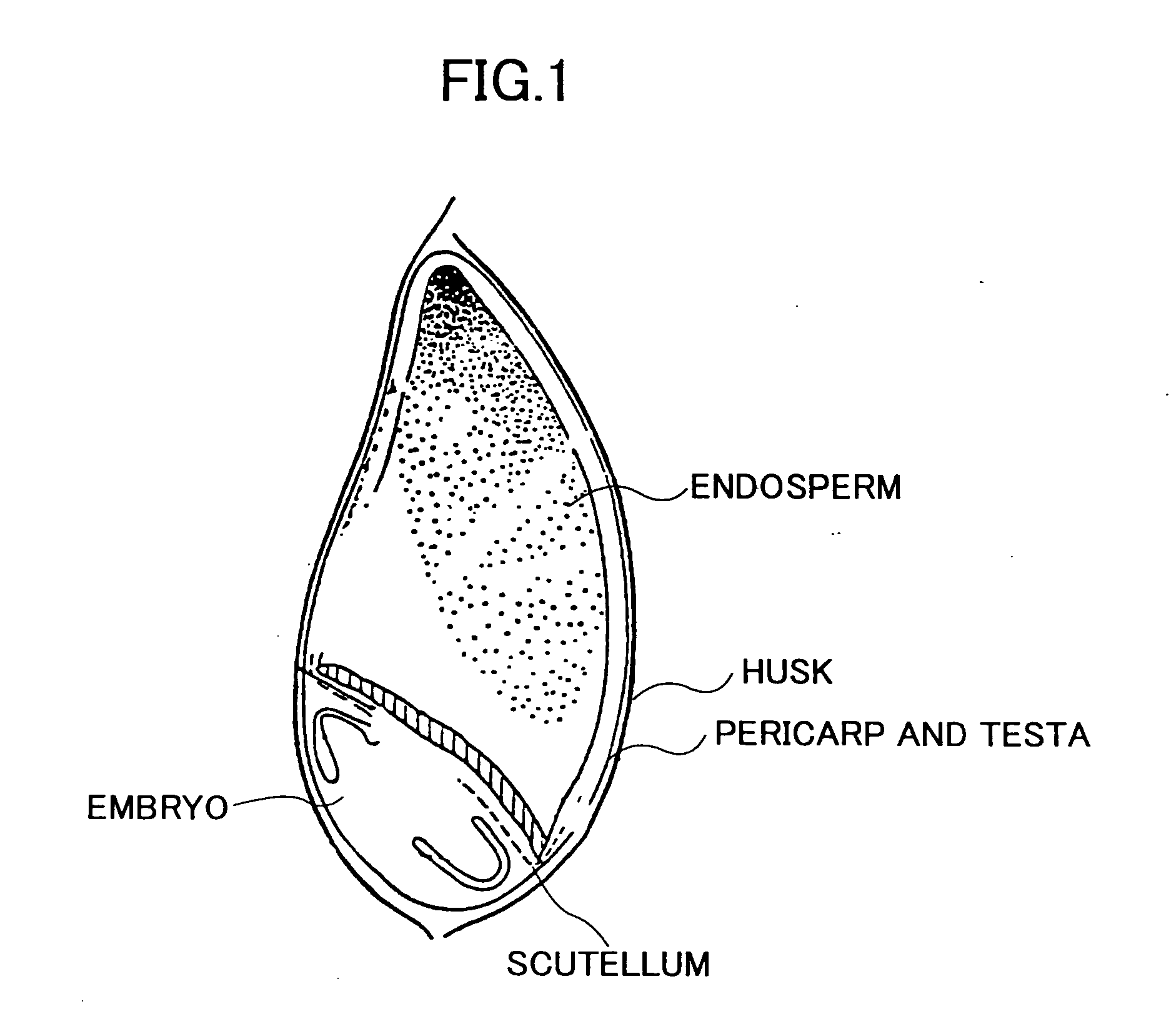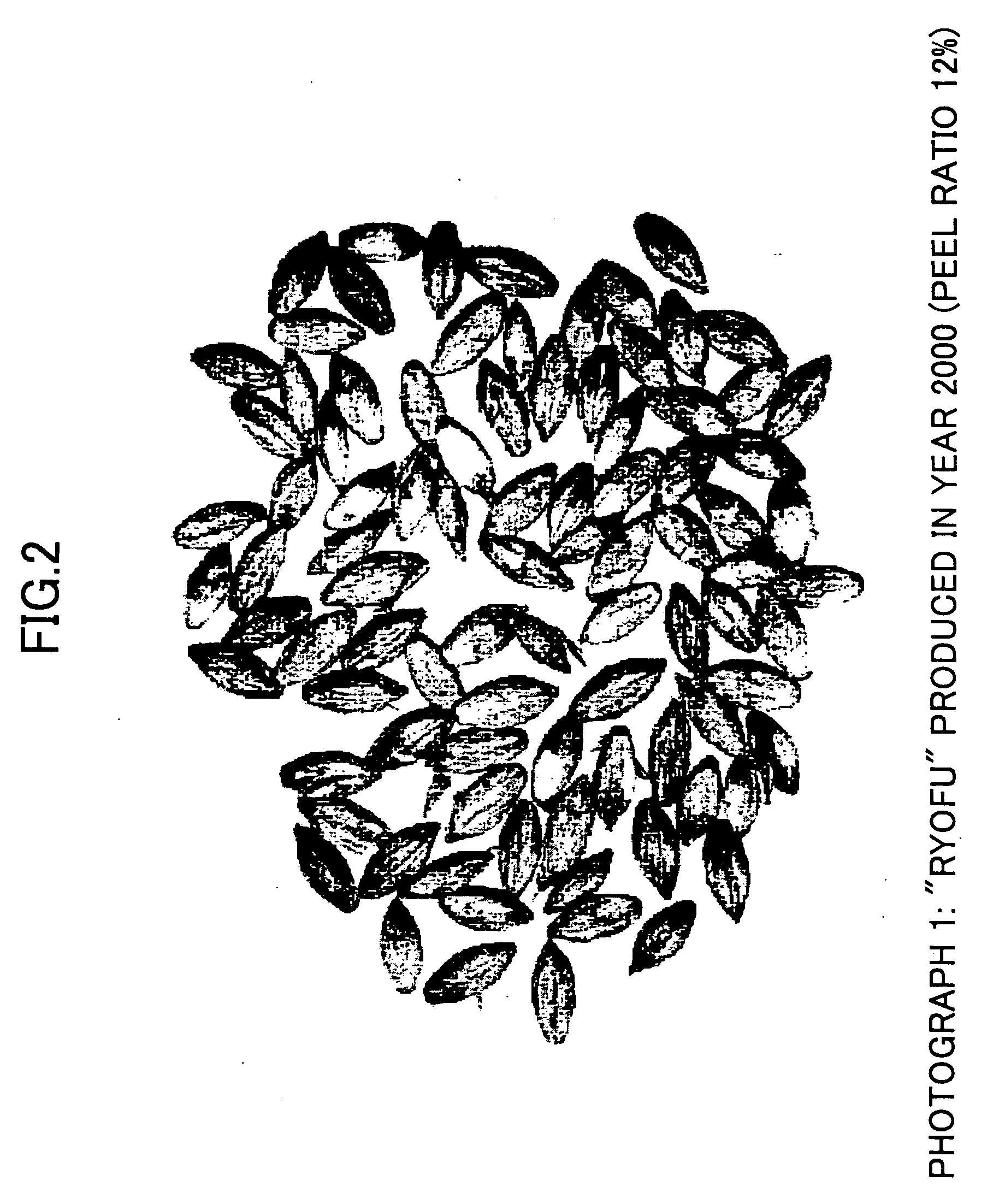Method of judging suitability of raw barley for feedstock for malt production according to staining technique
a technology of raw barley and malt production, applied in the field of barley suitability assessment, can solve the problems of product quality that is unsuitable for its intended use, more prone to damage than dry barley, and unsuitable for normal sprouted barley, and achieves the effect of high quality barley ingredients and strong physical strength
- Summary
- Abstract
- Description
- Claims
- Application Information
AI Technical Summary
Benefits of technology
Problems solved by technology
Method used
Image
Examples
Embodiment Construction
[0019] Embodiments of an evaluation method for evaluating the physical strength of a barley husk according to the present invention are described in detail below.
[0020] The barleys, the reagents, and the testing methods employed in the embodiments according to the present invention are given below. Barley
“Ingredient and Reagent”
[0021] 1. Ingredient [0022] 1-1: Malting barley “RYOFU” (Produced in Hokkaido in year 2000) [0023] 1-2: Malting barley “FRANKLIN” (Produced in Australia in years 1999-2000) [0024] 1-3: Barley “HARRINGTON” (Produced in Canada in year 1998) [0025] 2. Reagent [0026] 2-1: 50% Sulfuric Acid [0027] 2-2: 0.2% Methylene Blue+0.2% Eosin Y (98% Methanol Solution)
“Method”[0028] (1) Sample approximately 4 g of barley (approximately 100 kernels) from an ingredient lot. Add the samples to a 200 ml beaker containing 80 ml (room temperature) of 50% sulfuric acid. Agitate for 1 hour at 150 rpm by using a 5 cm long stirrer bar and make the husk easy to peel off. [0029] (2) ...
PUM
| Property | Measurement | Unit |
|---|---|---|
| agitation time | aaaaa | aaaaa |
| concentration | aaaaa | aaaaa |
| physical strength | aaaaa | aaaaa |
Abstract
Description
Claims
Application Information
 Login to View More
Login to View More - R&D
- Intellectual Property
- Life Sciences
- Materials
- Tech Scout
- Unparalleled Data Quality
- Higher Quality Content
- 60% Fewer Hallucinations
Browse by: Latest US Patents, China's latest patents, Technical Efficacy Thesaurus, Application Domain, Technology Topic, Popular Technical Reports.
© 2025 PatSnap. All rights reserved.Legal|Privacy policy|Modern Slavery Act Transparency Statement|Sitemap|About US| Contact US: help@patsnap.com



